-
 Bitcoin
Bitcoin $101,898.5005
-0.75% -
 Ethereum
Ethereum $2,258.1125
-1.07% -
 Tether USDt
Tether USDt $1.0004
0.01% -
 XRP
XRP $2.0178
-2.93% -
 BNB
BNB $624.0243
-1.53% -
 Solana
Solana $134.3298
-0.90% -
 USDC
USDC $0.9999
0.01% -
 TRON
TRON $0.2675
-2.05% -
 Dogecoin
Dogecoin $0.1538
-1.96% -
 Cardano
Cardano $0.5482
-1.11% -
 Hyperliquid
Hyperliquid $35.5636
5.45% -
 Bitcoin Cash
Bitcoin Cash $453.4902
-1.66% -
 Sui
Sui $2.5134
-2.97% -
 UNUS SED LEO
UNUS SED LEO $9.1292
1.77% -
 Chainlink
Chainlink $11.8457
-1.60% -
 Stellar
Stellar $0.2312
-2.73% -
 Avalanche
Avalanche $16.9721
0.29% -
 Toncoin
Toncoin $2.7549
-3.82% -
 Shiba Inu
Shiba Inu $0.0...01081
-1.10% -
 Litecoin
Litecoin $80.8250
-0.71% -
 Hedera
Hedera $0.1374
0.21% -
 Monero
Monero $305.4827
-2.36% -
 Ethena USDe
Ethena USDe $1.0006
0.00% -
 Dai
Dai $1.0000
-0.01% -
 Polkadot
Polkadot $3.2085
-3.12% -
 Bitget Token
Bitget Token $4.0845
-3.13% -
 Uniswap
Uniswap $6.3353
-1.63% -
 Pi
Pi $0.5085
-0.70% -
 Pepe
Pepe $0.0...08913
-3.82% -
 Aave
Aave $232.7090
-0.58%
How does the Lightning Network solve Bitcoin congestion? What is the usage process?
The Lightning Network enables fast, low-cost Bitcoin transactions by processing them off-chain, reducing congestion and fees on the main blockchain.
Jun 23, 2025 at 06:21 pm
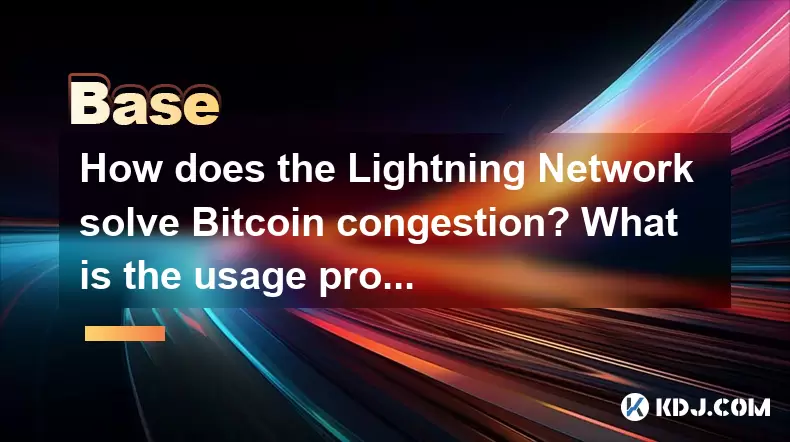
Understanding Bitcoin Network Congestion
Bitcoin, as a decentralized digital currency, operates on a blockchain that records every transaction in a public ledger. Each block has a limited size, typically 1 megabyte, which allows for only a certain number of transactions per second (TPS). When the number of transactions increases, the network becomes congested, leading to delays and higher fees. This congestion is especially noticeable during periods of high demand.
The issue stems from the fact that each transaction must be verified by miners and added to a block before it's considered confirmed. If many users are trying to send transactions at once, they have to compete for space in the next block, often by increasing their transaction fees. This creates a bottleneck, making Bitcoin less efficient for small or frequent payments.
Congestion leads to slower confirmations and increased costs, limiting Bitcoin’s scalability.
What Is the Lightning Network?
The Lightning Network is a layer-2 scaling solution built on top of the Bitcoin blockchain. It aims to solve the scalability problem by enabling near-instant and low-cost transactions without requiring every transaction to be recorded directly on the main blockchain.
Instead of broadcasting every transaction to the entire network, Lightning allows users to create payment channels between two parties. These channels can remain open for extended periods, during which any number of transactions can occur off-chain. Only the final balance of these transactions is eventually settled on the Bitcoin blockchain when the channel is closed.
This method drastically reduces the load on the main chain and makes microtransactions feasible, something that would otherwise be economically impractical due to high fees.
Lightning Network enables off-chain transactions, reducing pressure on the Bitcoin mainnet.
How Does the Lightning Network Work?
To understand how the Lightning Network alleviates congestion, it’s important to break down its operational mechanism:
- Opening a Channel: Two parties deposit funds into a multi-signature wallet, which acts as a shared escrow account. This initial transaction is broadcast to the Bitcoin network and recorded on the blockchain.
- Off-Chain Transactions: Once the channel is open, participants can exchange unlimited transactions instantly and privately. These updates are signed but not broadcast to the main chain.
- Closing a Channel: When either party wants to end the relationship, the final state of the channel is submitted to the blockchain. The distribution of funds reflects all the transactions that occurred while the channel was active.
Smart contracts ensure both parties act honestly. If one tries to cheat by submitting an outdated transaction, the other can challenge it with cryptographic proof and penalize the malicious actor.
Each transaction within a channel avoids adding data to the blockchain, improving efficiency.
Setting Up a Lightning Node
To participate in the Lightning Network, users must set up a node. Here’s how to do it step-by-step:
- Install a compatible wallet that supports Lightning, such as LND (Lightning Network Daemon), c-lightning, or Eclair.
- Ensure you have a full Bitcoin node running, like Bitcoin Core, which synchronizes with the blockchain.
- Configure your Lightning software to connect with your Bitcoin node.
- Fund your wallet with some Bitcoin to open payment channels.
- Open a channel with another node by specifying the amount you want to lock in the channel.
- Wait for the opening transaction to be confirmed on the blockchain.
After setup, you can start sending and receiving payments through the Lightning Network almost instantly.
Running a node requires technical knowledge and resources, but grants full control over funds.
Making Payments via the Lightning Network
Using the Lightning Network for everyday payments involves several steps:
- Generate or receive a Lightning invoice from the merchant or recipient.
- Use your Lightning wallet to scan or paste the invoice.
- Confirm the amount and route the payment through available nodes in the network.
- The payment is delivered almost instantly, without waiting for blockchain confirmations.
Routing payments depends on the network topology—your wallet will automatically select the most efficient path based on available liquidity and fees. Some wallets allow manual routing for advanced users.
Unlike on-chain transactions, there’s no need to wait for multiple confirmations, and fees are often fractions of a cent.
Payments settle in seconds with negligible fees, ideal for daily use.
Frequently Asked Questions
Q: Can I lose money if a Lightning node goes offline?
A: If your node goes offline temporarily, you won’t lose funds. However, if a counterparty tries to close the channel dishonestly while you’re offline, you might lose funds unless your node comes back online in time to contest the fraud.
Q: Are Lightning transactions reversible?
A: No, Lightning transactions are irreversible once settled on the blockchain. While off-chain, they can be updated, but once finalized, they follow the same rules as regular Bitcoin transactions.
Q: How much Bitcoin do I need to open a Lightning channel?
A: There’s no minimum requirement, but you’ll need enough to cover the cost of opening the channel and leaving sufficient liquidity for your intended usage. A few thousand satoshis is typically enough for casual use.
Q: Is the Lightning Network secure?
A: Yes, it uses cryptographic protocols and smart contracts to enforce trustless behavior between parties. As long as private keys are kept secure and nodes are properly maintained, the system is robust against attacks.
Disclaimer:info@kdj.com
The information provided is not trading advice. kdj.com does not assume any responsibility for any investments made based on the information provided in this article. Cryptocurrencies are highly volatile and it is highly recommended that you invest with caution after thorough research!
If you believe that the content used on this website infringes your copyright, please contact us immediately (info@kdj.com) and we will delete it promptly.
- FUNToken: Decoding Past Trends and Getting Started in the Gaming Crypto Sphere
- 2025-06-23 22:25:12
- BTC Price Analysis: Navigating Volatility and the Quest for a New ATH
- 2025-06-23 22:25:12
- Genesis, Bitcoin Mining, and Air-Cooled Miners: A New Era?
- 2025-06-23 22:45:12
- Coinbase's Growth and Resilience: Navigating the Crypto Landscape
- 2025-06-23 22:45:12
- Bitcoin Options Market: Bullish Bets Amidst Geopolitical Jitters
- 2025-06-23 22:51:52
- Dubai's Virtual Asset Scene Heats Up: GAP 3 Partners Lands Landmark Investment Advisor License
- 2025-06-23 22:55:12
Related knowledge
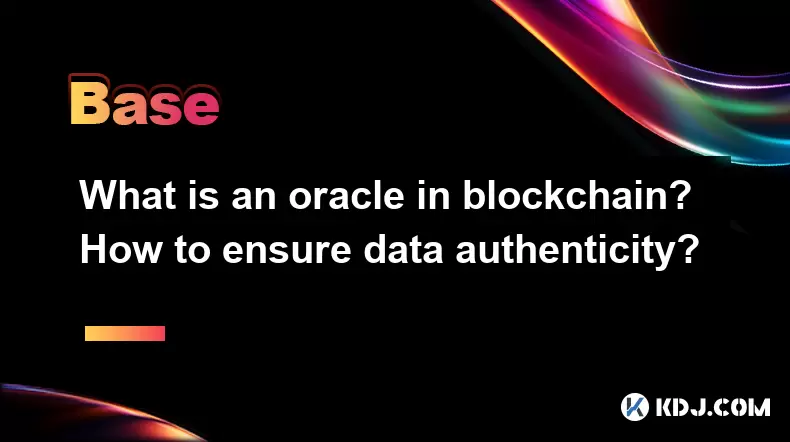
What is an oracle in blockchain? How to ensure data authenticity?
Jun 19,2025 at 08:49pm
Understanding the Role of an Oracle in BlockchainIn the context of blockchain technology, an oracle serves as a bridge between the blockchain and external data sources. While blockchains are inherently secure and decentralized, they cannot access real-world information on their own. Oracles enable smart contracts to interact with off-chain data such as ...
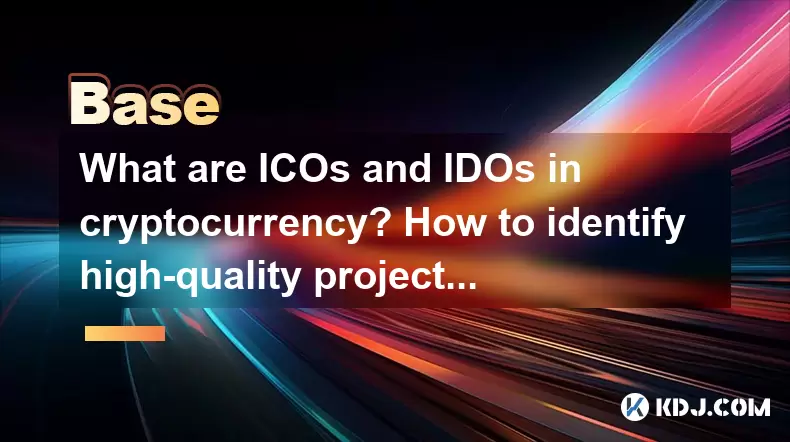
What are ICOs and IDOs in cryptocurrency? How to identify high-quality projects?
Jun 22,2025 at 11:49am
Understanding ICOs in CryptocurrencyInitial Coin Offerings (ICOs) are fundraising mechanisms used by cryptocurrency startups to raise capital for their projects. In an ICO, a company creates and sells its own tokens to investors in exchange for established cryptocurrencies like Bitcoin or Ethereum. The process typically involves the release of a whitepa...
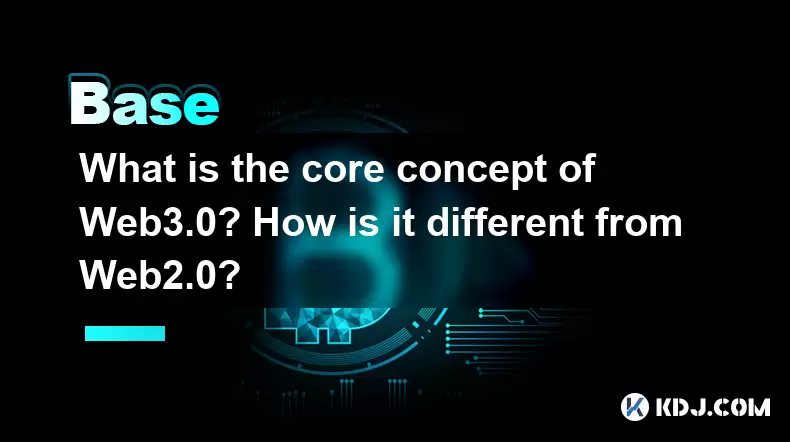
What is the core concept of Web3.0? How is it different from Web2.0?
Jun 21,2025 at 05:56pm
Decentralization as the Foundation of Web3.0The core concept of Web3.0 revolves around decentralization, which fundamentally challenges the centralized architecture of Web2.0. In Web3.0, control and ownership are distributed across a network rather than being held by a central authority or corporation. This is achieved primarily through blockchain techn...
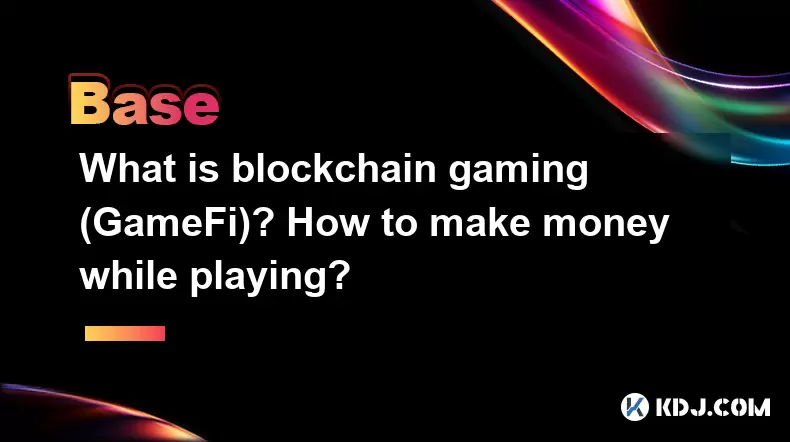
What is blockchain gaming (GameFi)? How to make money while playing?
Jun 20,2025 at 07:56am
Understanding Blockchain Gaming (GameFi)Blockchain gaming, often referred to as GameFi, is a fusion of blockchain technology and video games. It enables players to own in-game assets through non-fungible tokens (NFTs) and earn rewards via cryptocurrencies or token-based systems. Unlike traditional games where items are controlled by centralized develope...
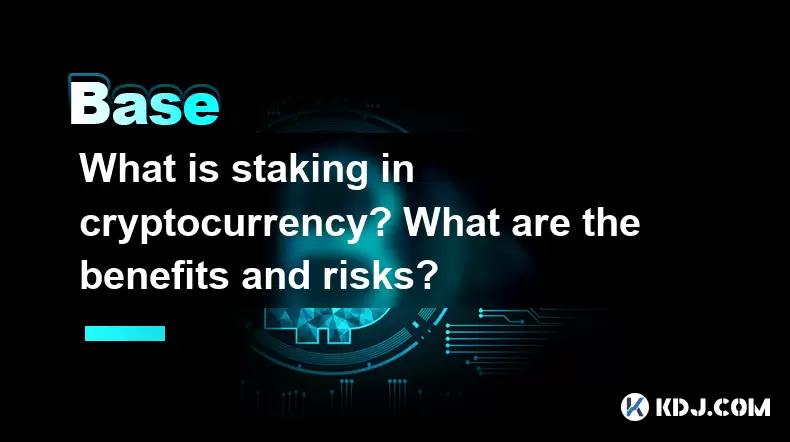
What is staking in cryptocurrency? What are the benefits and risks?
Jun 22,2025 at 10:01am
Understanding the Concept of Staking in CryptocurrencyStaking in cryptocurrency refers to the process of actively participating in transaction validation on a blockchain network that uses a Proof-of-Stake (PoS) consensus mechanism. Instead of miners competing to solve complex mathematical puzzles as in Proof-of-Work systems like Bitcoin, PoS blockchains...

How does the Lightning Network solve Bitcoin congestion? What is the usage process?
Jun 23,2025 at 06:21pm
Understanding Bitcoin Network CongestionBitcoin, as a decentralized digital currency, operates on a blockchain that records every transaction in a public ledger. Each block has a limited size, typically 1 megabyte, which allows for only a certain number of transactions per second (TPS). When the number of transactions increases, the network becomes cong...

What is an oracle in blockchain? How to ensure data authenticity?
Jun 19,2025 at 08:49pm
Understanding the Role of an Oracle in BlockchainIn the context of blockchain technology, an oracle serves as a bridge between the blockchain and external data sources. While blockchains are inherently secure and decentralized, they cannot access real-world information on their own. Oracles enable smart contracts to interact with off-chain data such as ...

What are ICOs and IDOs in cryptocurrency? How to identify high-quality projects?
Jun 22,2025 at 11:49am
Understanding ICOs in CryptocurrencyInitial Coin Offerings (ICOs) are fundraising mechanisms used by cryptocurrency startups to raise capital for their projects. In an ICO, a company creates and sells its own tokens to investors in exchange for established cryptocurrencies like Bitcoin or Ethereum. The process typically involves the release of a whitepa...

What is the core concept of Web3.0? How is it different from Web2.0?
Jun 21,2025 at 05:56pm
Decentralization as the Foundation of Web3.0The core concept of Web3.0 revolves around decentralization, which fundamentally challenges the centralized architecture of Web2.0. In Web3.0, control and ownership are distributed across a network rather than being held by a central authority or corporation. This is achieved primarily through blockchain techn...

What is blockchain gaming (GameFi)? How to make money while playing?
Jun 20,2025 at 07:56am
Understanding Blockchain Gaming (GameFi)Blockchain gaming, often referred to as GameFi, is a fusion of blockchain technology and video games. It enables players to own in-game assets through non-fungible tokens (NFTs) and earn rewards via cryptocurrencies or token-based systems. Unlike traditional games where items are controlled by centralized develope...

What is staking in cryptocurrency? What are the benefits and risks?
Jun 22,2025 at 10:01am
Understanding the Concept of Staking in CryptocurrencyStaking in cryptocurrency refers to the process of actively participating in transaction validation on a blockchain network that uses a Proof-of-Stake (PoS) consensus mechanism. Instead of miners competing to solve complex mathematical puzzles as in Proof-of-Work systems like Bitcoin, PoS blockchains...

How does the Lightning Network solve Bitcoin congestion? What is the usage process?
Jun 23,2025 at 06:21pm
Understanding Bitcoin Network CongestionBitcoin, as a decentralized digital currency, operates on a blockchain that records every transaction in a public ledger. Each block has a limited size, typically 1 megabyte, which allows for only a certain number of transactions per second (TPS). When the number of transactions increases, the network becomes cong...
See all articles
























































































